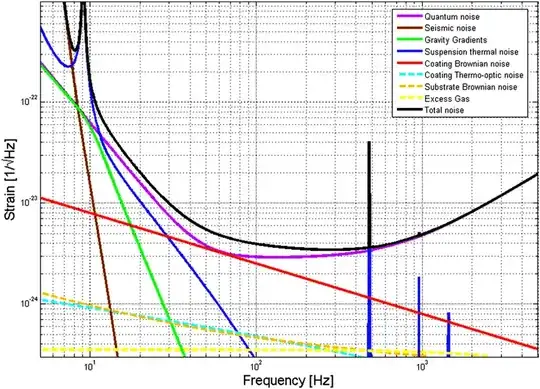In principle, any vibrational disturbance in the detection band of a gravitational wave detector will "cause the arms of the interferometer to move." There are all sorts of vibrations that effect the detector beams, as shown in this theoretical LIGO noise curve for the LIGO detectors. So, to detect gravitational waves is to identify a specific signal amidst an ocean, so to speak, of signals. For gravitational wave observers, everything else is noise - but one person's noise is another person's signal, keep in mind, so achieving the detection of gravitational waves through interferometry requires numerous engineering feats for understanding and mitigating various noises involving numerous fields of expertise, e.g. seismic waves dominate ground based detectors at frequencies at the lower edge of their detection band. Here is the LIGO noise extraction paper with full details, and here is a more approachable version of the paper by C Berry.

Does the detection of Gravitational Waves provide any significant headway into concretely answering as to what exactly is causing the arms of the interferometer to move or even why should they move at all?
The gravitational wave detectors LIGO were technically online for over a decade, doing test runs and improving its sensitivity, before detecting a gravitational wave with high enough confidence (and low enough false-alarm rate) in 2015. The process of analyzing data and extracting a signal involves understanding the various things that CAN effect the detector, so yes understanding what causes the arms of the interferometer to move is fundamental to being able to detect a gravitational wave. If you're looking for a more specific answer then you'll need to ask a more specific question.
As for this statement:
It seems that the physicality/existence of spacetime is debatable and not agreed upon which prompts me towards this question.
You must NOT confuse two things: 1) the experimental verification of predictions of a theory; 2) the philosophical interpretation of a theory. Of course these two things may be related in some nontrivial ways, but they are not necessarily the same. With GR, gravitational waves are a prediction of the theory, that's why we'd expect the detector arms to move if the conditions are right (plus the various OTHER sources of vibration as I've discussed above). There is a rich history of philosophy of the science of GR, which does not contradict the verification of its predictions.
If we try to ask in some uber metaphysical sense "what actually causes the earth to move around the sun" then we'll get nowhere. The utility of science seems to be that it offers models for understanding, for example, what causes the earth to move around the sun. Same goes for "what actually causes the detector beams to move." Whether or not you believe in the classical interpretation of GR as spacetime curvature being a model of gravity (there are other interpretations), gravitational waves are a mathematical prediction of GR, they are metric perturbations of spacetime, and when we look out at the Universe and see something that "looks, walks and quacks" like a gravitational wave, then it's likely that it is one. We are free to interpret the result however we want, but within GR we view gravitational waves as the propagation of energy and momentum across spacetime (generated by time varying mass-energy quadrupole moments or higher order currents and modes) - the model's tools don't have to be "real" as the signal, just like how an analog voltage signal may be viewed as more "real" than the electric fields that we use to model the source.
